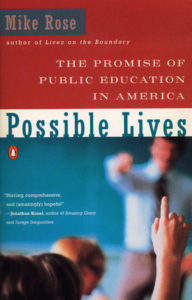Curators notes:
And similar to teachers of language minority students, teachers of very young children may want to stress the habits of mind relevant to a discipline more strongly than disciplinary conventions more appropriate to older students. In this portrait of an expert first-grade teacher at work in inner-city Baltimore, we see a masterful blend of attention to science in the midst of attention to child development and culturally responsive teaching.

At a time when multiculturalism and race-conscious curriculum have become such hot-button issues—and the culture war polemics around them generates more heat than light—this teacher’s work represents the rich and layered possibilities of such an approach. Race is at the center of Stephanie Terry’s pedagogy, in the books she selects, in the environment she creates in her interactions with students and parents. But the centrality of race does not lead to an exclusionary course of study. Ms. Terry incorporates much from a range of sources—Dr. Seuss to Venn diagrams—into her curriculum.
I also include this chapter because it illustrates…a key dilemma, both a political and rhetorical one: how to represent the opportunity opened up by good teaching (or social intervention) while simultaneously representing the terrible threat to opportunity posed by a history of discrimination and poverty, how to insist on the possible while being clear-eyed about the devastation of inequality.
Download “Baltimore, Maryland” from Possible Lives →


